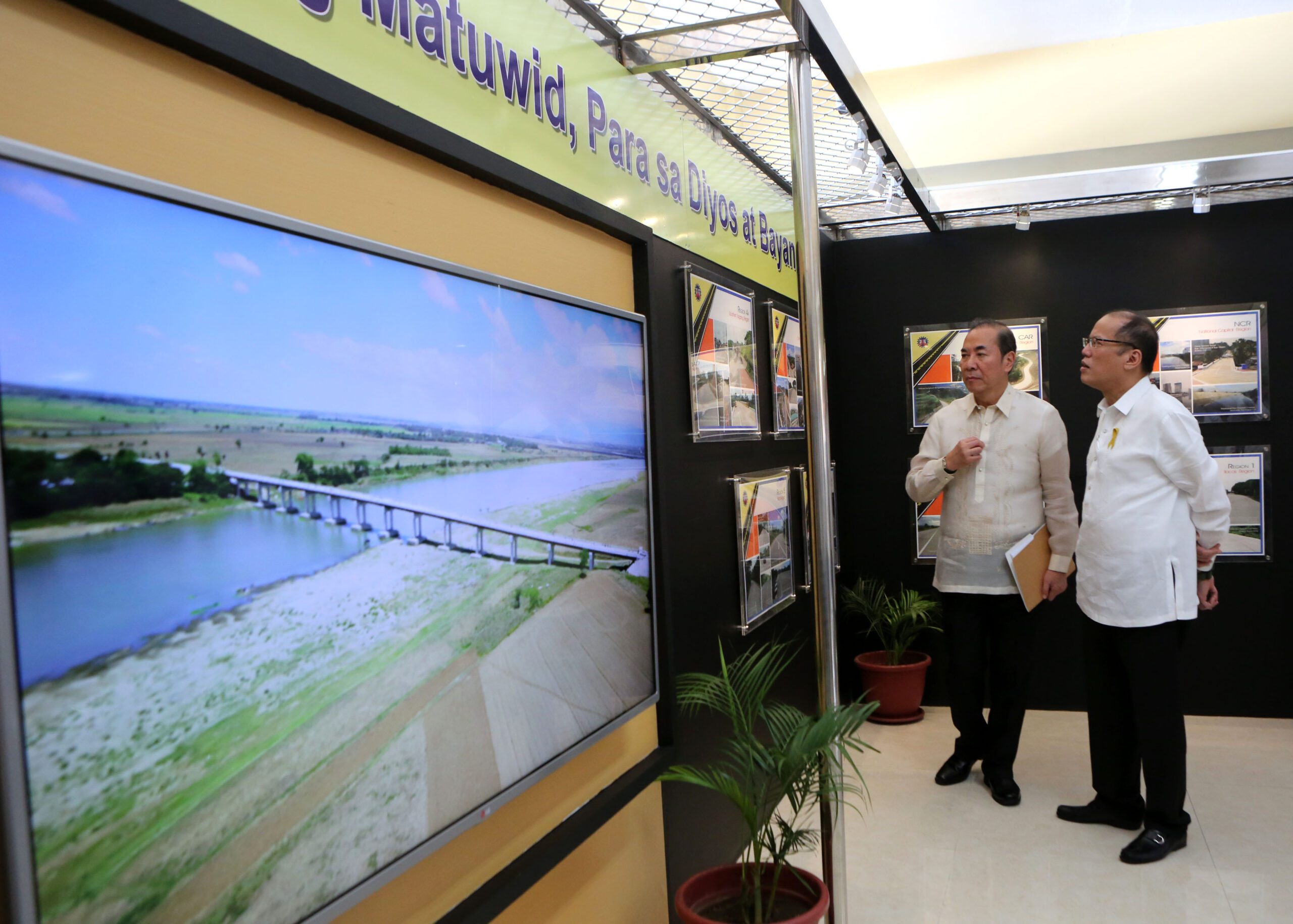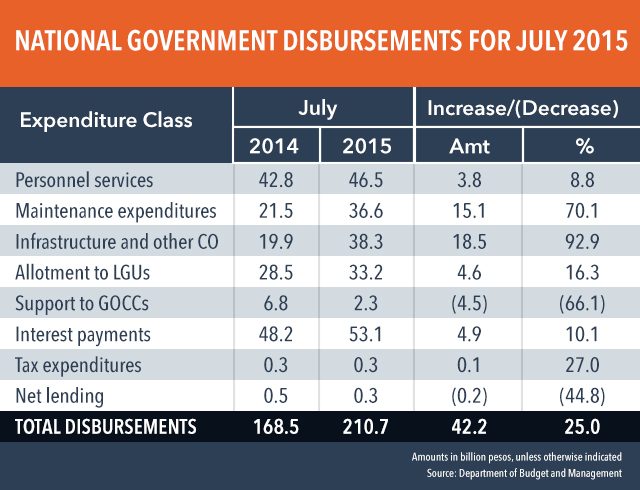SUMMARY
This is AI generated summarization, which may have errors. For context, always refer to the full article.

MANILA, Philippines – Government spending on infrastructure and capital outlay in July 2015 skyrocketed by 92.9% or almost P19 billion ($406.19 million) over levels posted in July 2014.
This ramped up disbursements for the month and hiked July expenditures to P210.7 billion ($4.5 billion) this year, the Department of Budget and Management (DBM) reported on Monday, September 14.
Budget Secretary Florencio Abad said that, earlier this year, the Aquino administration, through the DBM, established catch-up measures so the departments could accelerate their disbursements.
“We’re pleased to see that our major spending agencies are responding very well. In July, for example, spending for infrastructure and capital outlay have gunned ahead to expand by almost 100% year-on-year,” Abad said.
“Our leading agencies for infrastructure programs are making better use of their budgets. As a result, more goods and services are being rolled out to the public, and in better time,” he added.
The country’s gross domestic product grew 5.6% in the second quarter of 2015. It went against a regional slowdown with the help of strong performance of industry and services sectors and robust government spending. (READ: Philippines’ Q2 GDP growth rises to 5.6%)
The World Bank earlier said that if the government continues to tighten its belt over much-needed infrastructure, this might become a trend and would be detrimental to the country’s long-term growth.
Thus, the government earlier shared its aim to spend by 2016 at least 5% of the gross domestic product (GDP) or $18 billion for major infrastructure projects. (READ: Gov’t raises infra spending to $18B by 2016)
Public spending growth
Government disbursements for July rose by P42.2 billion ($901.96 million) or 25% year-on-year. Thus, the P210.7 billion ($4.50 billion) total disbursements for the month marked the fastest that public spending had grown since 2015 started.
Spending on infrastructure and capital outlay amounted to P38.3 billion ($818.83 million) for July, compared to the P19.9 billion ($425.46 million) disbursed in the same month last year.
The upsurge in infrastructure and capital outlay disbursements was due mostly to the ongoing implementation of road work projects under the Department of Public Works and Highways. (READ: PH gov’t ramps up infrastructure spending)
The acquisition of aircraft under the Armed Forces of the Philippines Modernization Program of the Department of National Defense, as well as the implementation of local infrastructure projects in the Autonomous Region in Muslim Mindanao contributed to the spending increase as well.

Maintenance expenditures spike
Maintenance expenditures also increased 70% year-on-year. It leapt by P15.1 billion ($322.79 million) to register at P36.6 billion ($782.42 million). Spending on this sector was made mostly under the administration’s social protection, education, and health care programs.
The largest disbursements under maintenance expenditures were made by the Department of Social Welfare and Development to widen the implementation of the Conditional Cash Transfer program, as well as to support Emergency Shelter Assistance for calamity victims.
Spending by the Department of the Interior and Local Government likewise bolstered maintenance expenditures via locally funded projects, including those for poverty reduction – specifically through the Bottom-Up Budgeting program – as well as for peace-building, reconstruction, and development projects in war-torn areas.
Abad said the social welfare component of the national budget has always been a keystone in the government’s our growth agenda.
“If our social development agencies continue to spend as vigorously, not only can we confidently support the continuing expansion of our economy. We can also make sure that the poorest Filipinos get the education, aid, and healthcare services that are urgently due them,” Abad said.
Personnel services, LGUs spending rise
Personnel services also climbed to P371.3 billion ($7.94 billion) as of July, resulting in a year-on-year increase of 10.6%, mostly due to the release of the mid-year and Productivity Enhancement Incentives to government employees. It was also attributed to the hiring activities for teachers, police, engineers, and other positions in public health.
Local government unit allotments also increased to P238.5 billion ($5.10 billion), 16.7% higher than comparable levels last year, after the national government increased its revenue collections and broadened the country’s tax base. Growth in this spending class was also supported by larger local government shares in proceeds from national taxes, including tobacco excise taxes.
Overall, Abad said the government is optimistic that public spending will continue its upward trajectory in the succeeding months.
“As budget reforms gain further traction – and as our agencies find appropriate means to optimize their budgets – we can likewise bring the real and lasting benefits of good governance to our citizenry. No Filipino should be left behind,” Abad said. – Rappler.com
US$1 = P46.79
Add a comment
How does this make you feel?
There are no comments yet. Add your comment to start the conversation.